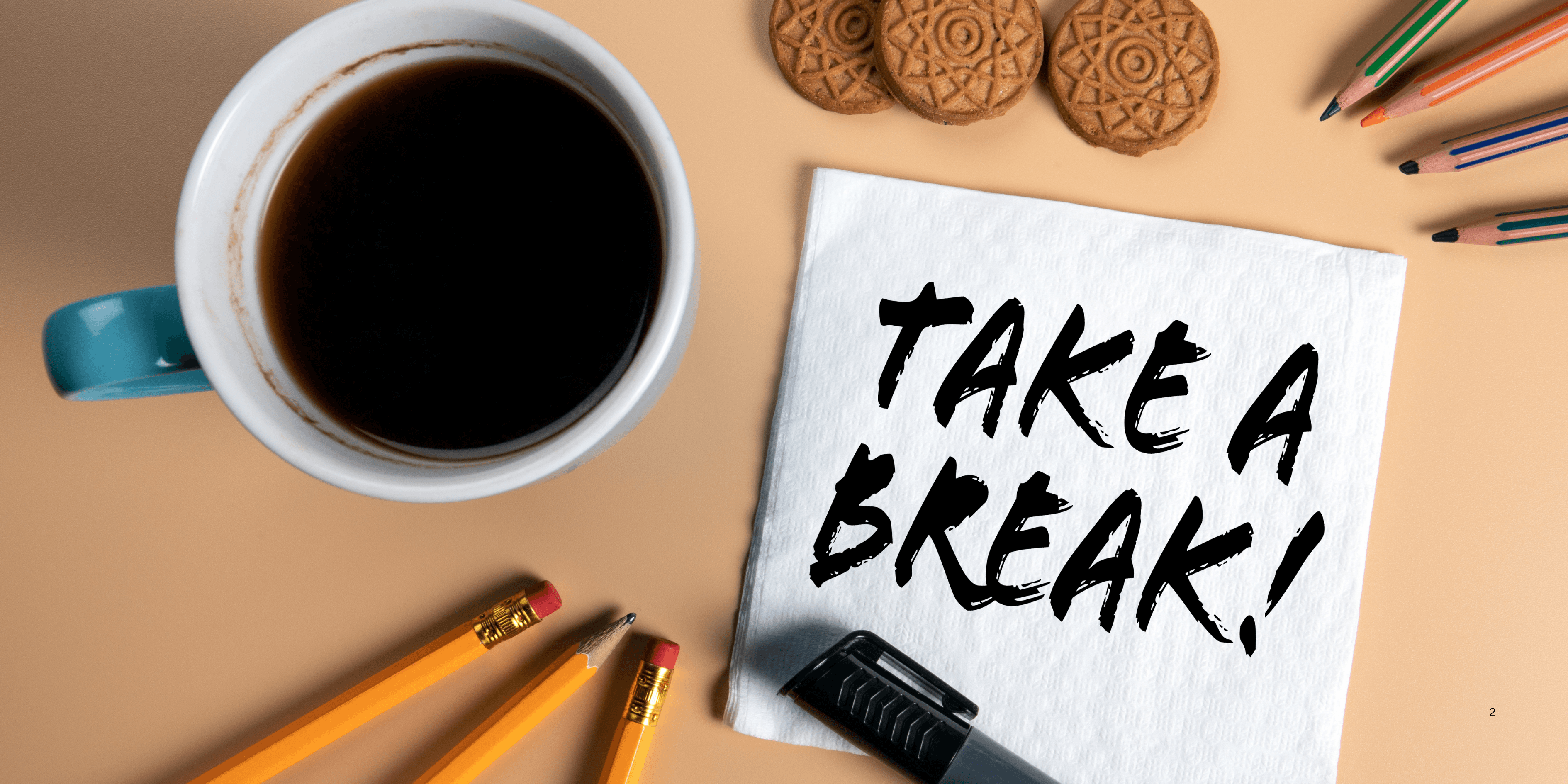
“
Practicing taking breaks & disconnecting from work is crucial in today’s fast-paced work culture. It improves focus, prevents burnout, and supports mental clarity. By taking breaks & disconnecting from work routines, you unlock better productivity and personal peace.1
1
”
Practicing taking breaks & disconnecting from work is crucial in today’s fast-paced work culture. It improves focus, prevents burnout, and supports mental clarity. By taking breaks & disconnecting from work routines, you unlock better productivity and personal peace. 1
Working non-stop can lower performance and heighten mistakes. Regular breaks improve mental clarity, enhance memory retention, and allow the brain to better absorb complex information.2
Research confirms that even short breaks can refresh focus. When people disconnect temporarily, their brains reset, allowing them to return to tasks with sharper concentration and better cognitive efficiency. 3

Without strategic breaks, attention span and performance begin to drop. Our brains follow ultradian rhythms—cycles of high and low alertness—making scheduled pauses vital to optimize natural productivity patterns.
Disconnecting from work gives your prefrontal cortex time to relax. This part of the brain handles problem-solving, and stepping away restores its full decision-making and creative capabilities afterward. 4
Constant digital engagement leads to fatigue and burnout. Temporarily unplugging from devices, even for 15 minutes, gives your mind space to unwind and promotes improved long-term digital well-being. 5
Frequent breaks reduce the risk of repetitive strain injuries. By standing, stretching, or walking, you encourage blood circulation, reduce stiffness, and protect long-term joint and muscle health from daily strain.6
A well-timed break enhances creativity. When people stop consciously thinking about a problem, the brain continues to work subconsciously—leading to those “aha” moments that spark innovative thinking and ideas. 7
Taking time away to breathe deeply, meditate, or just rest reduces cortisol levels. This lowers the risk of stress-related illnesses like heart disease, hypertension, and chronic fatigue syndrome. 8

Pausing to talk with others or share a laugh during breaks boosts emotional well-being. Social interaction promotes dopamine release, strengthening team cohesion and increasing workplace satisfaction.
Taking breaks doesn’t lower productivity—it increases it. Studies show employees who take regular short breaks throughout the day actually get more done than those who power through without resting.9
Employees who take vacations or regular mental breaks report higher job satisfaction. Time away fosters gratitude, refreshes motivation, and gives perspective that prevents emotional exhaustion from long-term work.10
Structured breaks, like the Pomodoro Technique, balance intense work and rest. This rhythm promotes sustained focus and reduces the mental weariness that occurs with marathon-style work sessions. 11
Disconnecting after work is equally important. Without boundaries, the brain stays in “task mode,” increasing stress and sleep issues. Logging off at day’s end allows for true psychological detachment. 12

A quick walk during a break can boost memory and executive function. Movement stimulates the hippocampus, the brain’s memory center, and improves information retention and analytical thinking.
Burnout isn't just exhaustion—it's emotional depletion. Breaks let people reset their mindset, regain enthusiasm, and rebuild the emotional reserves needed for decision-making and long-term engagement at work. 13
Mental fatigue causes tunnel vision. Regular disconnection opens up awareness, improves observational skills, and helps identify patterns and details that are usually missed during high-stress concentration periods. 14
Taking breaks promotes sleep quality. Overstimulated minds struggle to wind down at night. By building rest into the day, you help prevent insomnia and enhance your circadian rhythm balance. 15
A short 10-minute break with deep breathing resets the nervous system. This calms the fight-or-flight response and shifts the body into a relaxed, healing parasympathetic state, aiding recovery. 16
Long-term productivity depends on rhythm, not intensity. Brains work best with alternating effort and recovery. Without this cycle, burnout builds, and health outcomes worsen across physical and mental domains. 17


